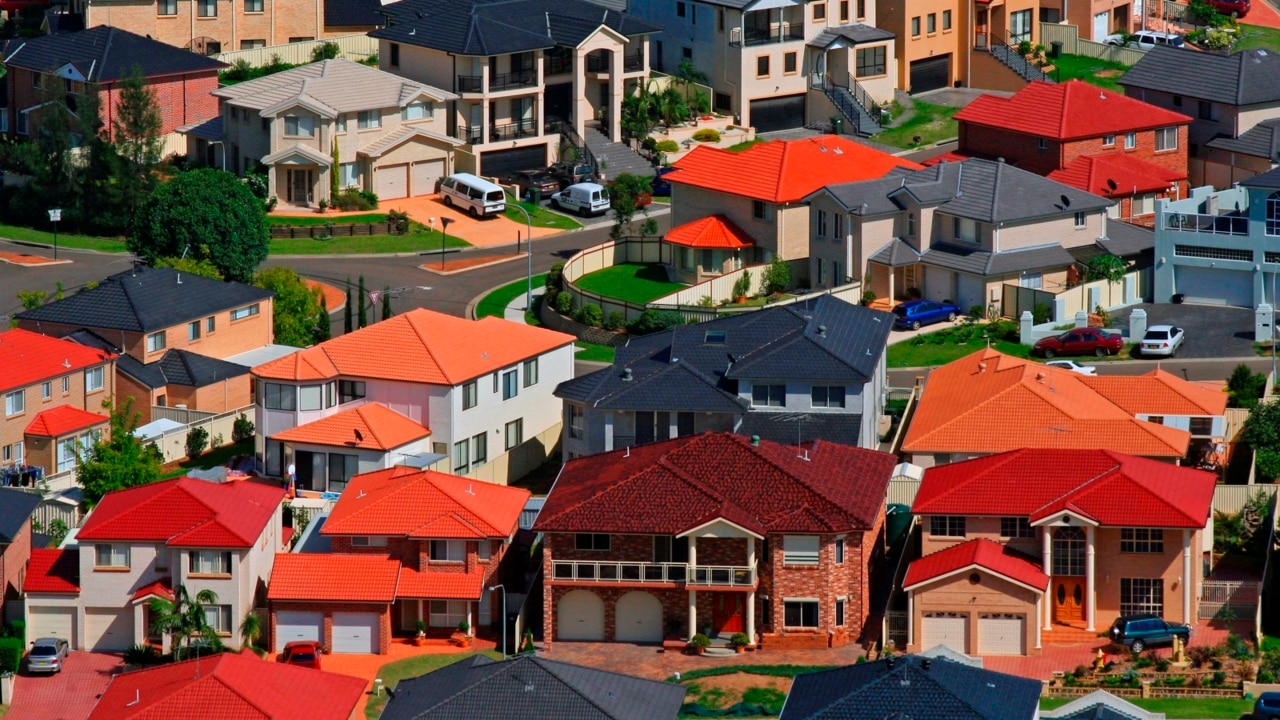RBA, APRA play house price ping-pong
According to our financial regulators, the most important thing to know about Australia’s ballooning house prices is that they’re someone else’s problem.

Business
Don't miss out on the headlines from Business. Followed categories will be added to My News.
As house prices move higher again — this week Melbourne has followed Sydney in passing its 2020 peak — the banking regulator has moved quickly to declare it has no role in the urgent issue of “solving house prices”.
Wayne Byres, the chairman of the Australian Prudential Regulation Authority, has made it clear his agency will not be held responsible for problems that may be looming in the red hot residential property sector.
Byres told a parliamentary committee: “It’s not our job to solve house prices”. He then added: “The extent to which there is a dynamic emerging of increased risk taking in the community … at this stage, it’s not evident”.
Hang on a second. Residential home lending across the banking system lifted by 44 per cent year-on-year in January.

What’s more, home lending is given special treatment in our finance system: specifically, the special position of the housing market is baked into any APRA analysis of the banking system in the way it that assesses housing loans favourably against business loans. Put simply, APRA allows the banks to hold less capital against home mortgages than it does against business loans.
But just now lending to residential property is rising at multiples of the rate of growth we are seeing in the wider economy, it is not a logical leap to suggest “risk-taking in the community” will be accelerating at the same time.
Of course, the Reserve Bank — the other key regulator — does not want to lift rates because it is trying to achieve stronger employment growth.


No surprise then to hear RBA governor Philip Lowe recently suggest: “The issue is, prices are rising. Are people borrowing responsibly and carefully?”
The danger here is that we have what you might call regulatory ping-pong as house price lift at a pace we have not seen for nearly two decades. Regulators need to clarify quickly what to do about rising prices and spend less time batting the issue away.
Meanwhile, the national housing market struck another milestone this week as Melbourne city house prices finally moved to a level higher then they were at the previous peak in April 2020. Sydney managed this achievement some time ago.
According to property research agency CoreLogic, the 12-month change in the combined capital city house price level is now 4.2 per cent, with Adelaide showing a jump over the last year of 8.3 per cent against a sliver of improvement in Melbourne with 0.3 per cent.
The capital cities of Sydney and Melbourne along with Canberra are now showing clearance rates at 80 per cent plus, compared to 45 per cent or less this time last year. Overall, it was the busiest auction week since the week ending March 25, 2018.
Despite the stronger picture on a national basis there are still concerns for the Melbourne market, where apartment oversupply and high vacancy rates in student districts means the city has a lot of catching up to do.
With ANZ Bank suggesting that calendar 2021 will see a 17 per cent in capital city house prices across the nation, both regulators — APRA and the RBA — will be hoping that an expected increase in stock levels coming onto the market later this year will soften price growth, which would mean neither agency has to enter the difficult business of trying to cool the market down.
Originally published as RBA, APRA play house price ping-pong





